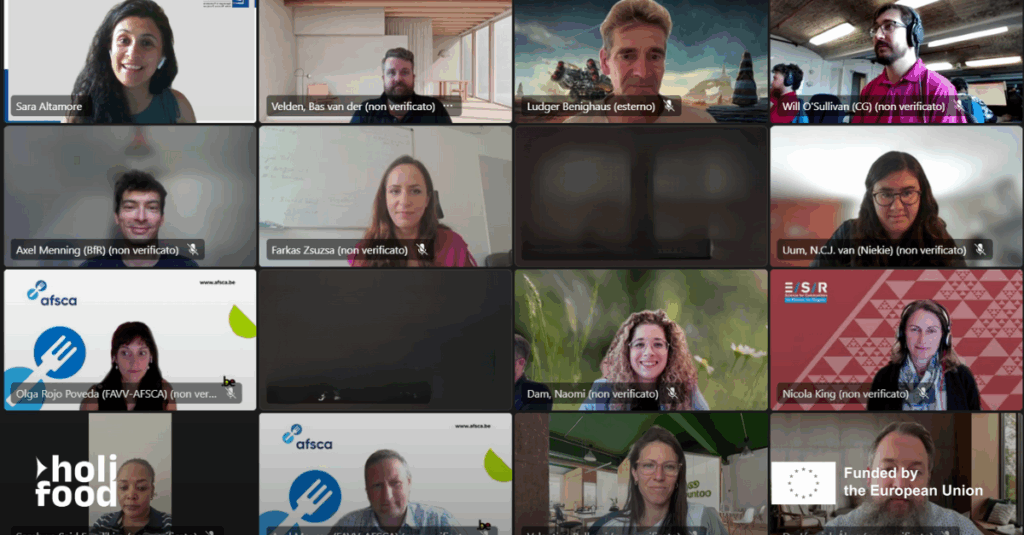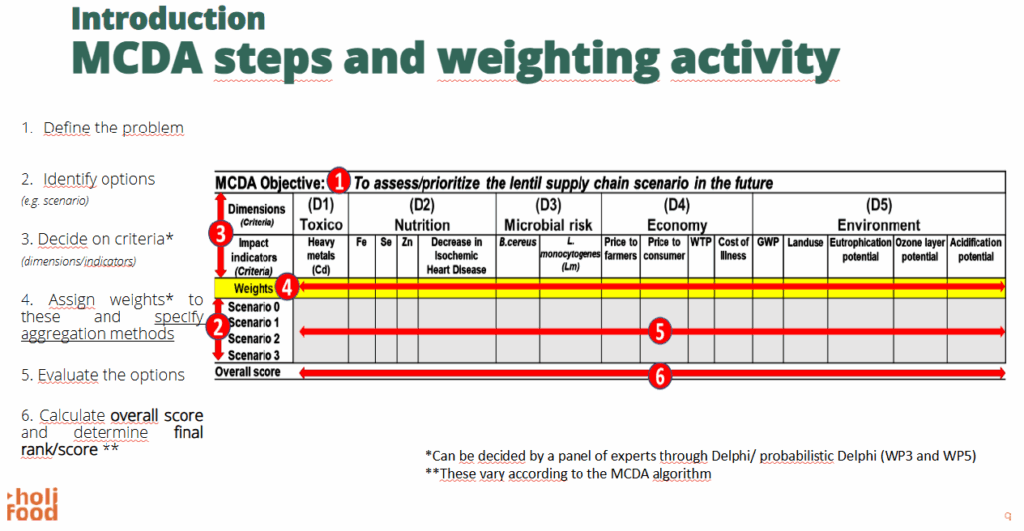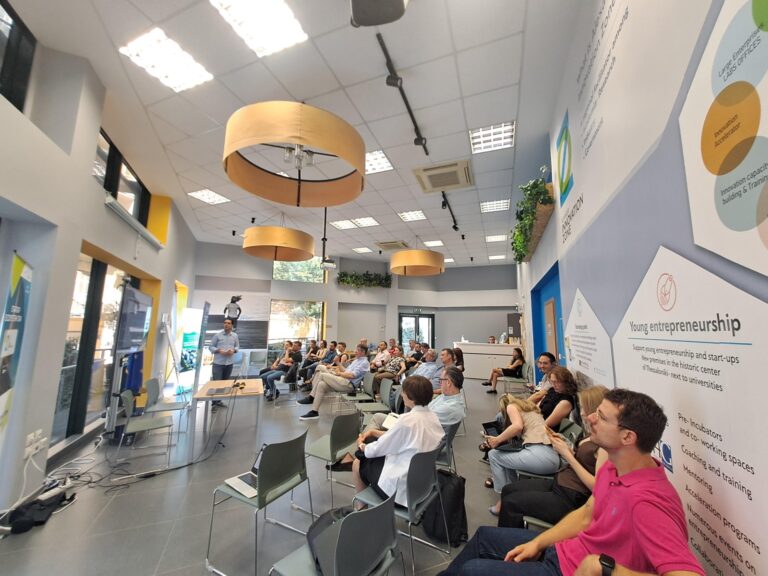Organization of the second round of Workshops (II)
LL#1 – “From Data to Decisions: Shape Food Safety Risk Detection with our Developers”
On 18 June 2025, the second round of the HOLiFOOD Living Lab experimentations, part of Work Package 1 (WP1) – Big Data Technologies and Artificial Intelligence for Food Safety Detection and Prevention, was held online. The session was coordinated by Wageningen Food Safety Research (WFSR) and conducted in collaboration with the Bundesinstitut für Risikobewertung (BfR), the University of Veterinary Medicine Budapest (UVMB), Crème Global, and DIALOGIK, with organizational support from the Agency for the Promotion of European Research (APRE).
The objective of the workshop was to invite participants to test the various tools available in HOLiFOOD’s interactive dashboard. Each tool is represented by a specific type of model: prediction modeling, weak signal mining and topic modeling. After an introduction to the HOLiFOOD project, along with an overview of emerging risk identification and previous Living Lab activities, participants joined three interactive breakout sessions, each dedicated to one specific tool. These sessions enabled in-depth exchanges between participants and tool developers, facilitating detailed discussions and mutual feedback.
A total of 36 participants attended, representing all sectors of the quadruple helix (public sector, academia, civil society and industry), and coming from European, Asian and African countries.
The feedback gathered was highly valuable for the further development of the tools. Key recommendations included:
- Supply Chain Tool: Participants suggested improving the communication of data limitations, refining data visualizations (e.g., by region), and incorporating a human factor to enhance
- Weak Signals Tool: A need for balance between the number of signals and the level of detail was The tool’s outputs served as a useful starting point for expert discussion and critical reflection.
- Topic Modelling Tool: Emphasis was placed on the importance of model validation, particularly through retrospective Additionally, introducing a scoring system could help evaluate and prioritize emerging risks more effectively.

LL#2 – Multicriteria weighting activity
On 6 June 2025, the Living Lab workshop “Multicriteria weighting activity” was conducted online in the framework of the work ongoing under Work Package 2 (WP2) – Holistic risk assessment for regulation.
It was coordinated by the University of New Castle (UNEW) and the French National Research Institute for Agriculture, Food and Environment (INRAE), with organizational support from the Agency for the Promotion of European Research (APRE).
The workshop focused on the weighting of key dimensions within the lentil and poultry supply chains and aimed to identify the relative importance of various criteria used to assess these supply chains (e.g. toxicological risk to human health, nutritional benefit, microbial risk, economic impact, environmental impact), to support more informed and sustainable decision- making. In addition to assessing these criteria, participants also considered future scenarios that may influence both the lentil and poultry supply chains.
The workshop was attended by 11 external participants, representing both supply chains. Most attendees came from academia and policymaking sectors, with one participant affiliated with a consumer group. Attendees came from seven different European countries as well as the United States, contributing a wide range of perspectives to the process.
This diversity enriched the discussions and supported a more balanced and comprehensive weighting of the assessment criteria.
The workshop format and structure proved effective in generating valuable insights and contributions. It provided a flexible model that can be adapted and expanded for future studies or applied to different supply chains.

LL#3 – AI for Risk Prevention
On 19 June 2025, Agroknow, leading Work Package 6 (WP6) on novel digital infrastructure for food safety, organized a hybrid Living Lab event in collaboration with the EFRA and STELAR HORIZON projects. The event brought together members of the HOLiFOOD consortium and invited stakeholders, including industry experts and researchers. Participants joined either in person at the Alexander Innovation Zone in Thessaloniki, Greece, or remotely via an online platform, engaging in discussions around innovative digital solutions for food safety.
Specifically, the “AI for Food Risk Prevention” Living Lab started with three introductory presentations that provided an overview of AI’s role in predicting and preventing food safety risks and showcased two innovation case studies: the first was on AI-driven models predicting pest outbreaks, while the second focused on detecting and predicting mycotoxin contamination risks in peanuts and cereals using the AI-powered prediction tools of the HOLiFOOD platform.
The theoretical part was followed by interactive breakout sessions where 16 participants from different countries and belonging to different categories engaged with AI-driven risk forecasting platforms through hands-on exercises and practical demonstrations, exploring how AI enhances predictive decision-making. During these sessions, attendees provided critical feedback on various aspects of the platform, including the models presented on different dashboards and their related functionalities.
To capture detailed feedback, forms were distributed to gather participants’ insights across several key areas. This feedback focused on how well the current platform dashboard design aligns with stakeholders’ needs and included suggestions for improvement. The insights gained from the Living Lab workshop will play a crucial role in the next stages of platform design and development.




